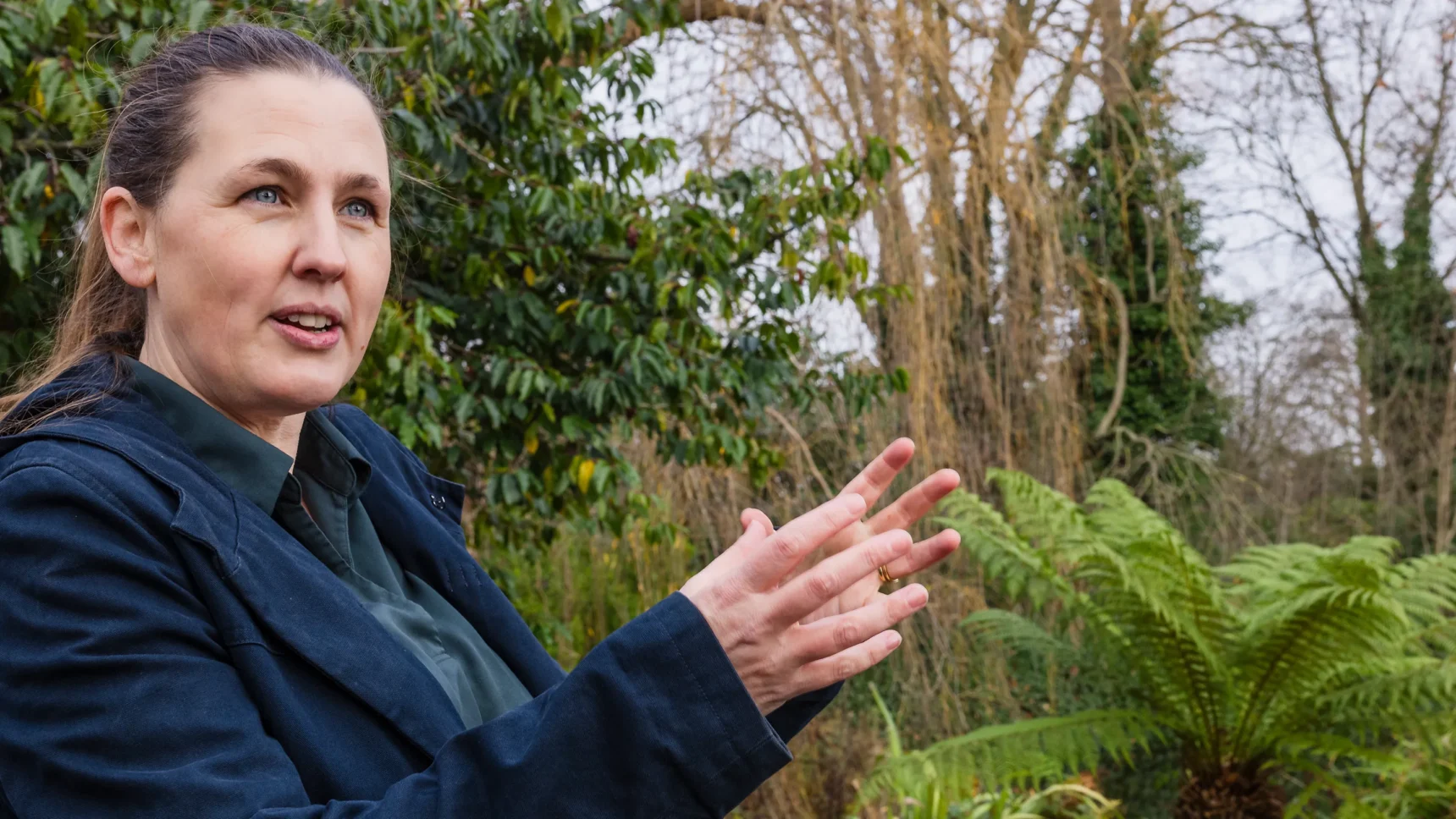The Mathematician Who Finds the Poetry in Math and the Math in Poetry
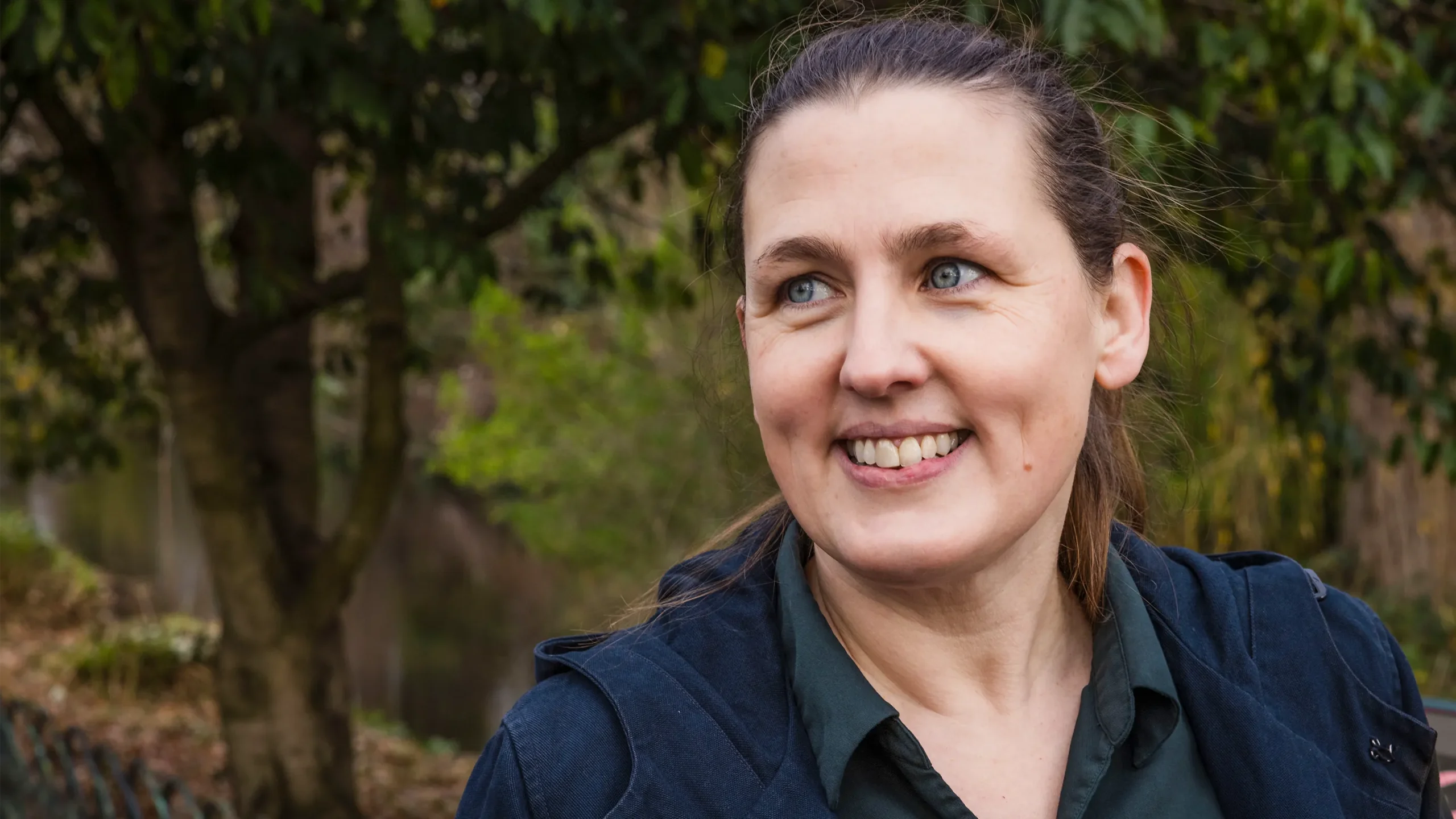
Philipp Ammon for Quanta Magazine
Introduction
Sarah Hart has always had an eye for the covert ways mathematics permeates other fields. As a child, she was struck by the ubiquity of the number 3 in her fairy tales. Hart’s mother, a math teacher, encouraged her pattern-seeking, giving her math puzzles to pass the time.
Hart went on to earn a doctorate in group theory in 2000 and later became a professor at Birkbeck, University of London. Hart’s research probed the structure of Coxeter groups, more general versions of structures that catalog the symmetries of polygons and prisms. In 2023, she published Once Upon a Prime, a book about the ways math appears in fiction and poetry. “Since we humans are part of the universe, it is only natural that our forms of creative expression, literature among them, will also manifest an inclination for pattern and structure,” Hart wrote. “Mathematics, then, is the key to an entirely different perspective on literature.”
Since 2020, Hart has been the professor of geometry at Gresham College in London. Gresham has no traditional courses; instead, its professors each deliver several public lectures per year. Hart is the first woman to ever hold the 428-year-old position, which was occupied in the 17th century by Isaac Barrow, famous for teaching another Isaac (Newton). More recently, it was held by Roger Penrose, a mathematician who won the 2020 Nobel Prize in Physics. Hart spoke with Quanta about how mathematics and art influence one another. The interview has been condensed and edited for clarity.
Why did you choose to write your book about the links between math and literature?
These links are less explored and less known than those between math and, say, music. The connections between mathematics and music have been celebrated since at least as far back as the Pythagoreans. However, though there has been writing and academic research about specific books, authors or genres, I hadn’t seen a book for a general audience about the broader connections between mathematics and literature.
How should people in the arts think about math?
There’s a lot of common ground between mathematics and, shall I say, the other arts. In literature, as well as music and art, you don’t ever start with nothing at all. If you’re a poet, you are choosing: Will I have a haiku with its very precise numerical constraints, or will I write a sonnet which has a certain number of lines, a certain rhyme scheme, a certain meter? Even something that doesn’t have a rhyme scheme will have line breaks, a rhythm. There will be constraints that inspire creativity, that help to focus you.
In mathematics, we have the same thing. We have some ground rules. Within that, we can explore, we can play, and we can prove theorems. What mathematics can do for the arts is help find new structures, show what the possibilities are. What would a piece of music look like that doesn’t have a key signature? We can think about the 12 tones and arranging them differently, and here are all the ways you can do that. Here are different color schemes you can devise, here are different forms of poetic meter.
What’s one example of how math has been affected by literature?
Thousands of years ago in India, poets were trying to think about the possible meters. In Sanskrit poetry, you have long and short syllables. Long is twice as long as short. If you want to work out how many there are that take a length of time of three, you can have short, short, short, or long, short, or short, long. There are three ways to make three. There are five ways to make a length-four phrase. And there are eight ways to make a length-five phrase. This sequence you’re getting is one where every term is the sum of the previous two. You exactly reproduce what we nowadays call the Fibonacci sequence. But this was centuries before Fibonacci.
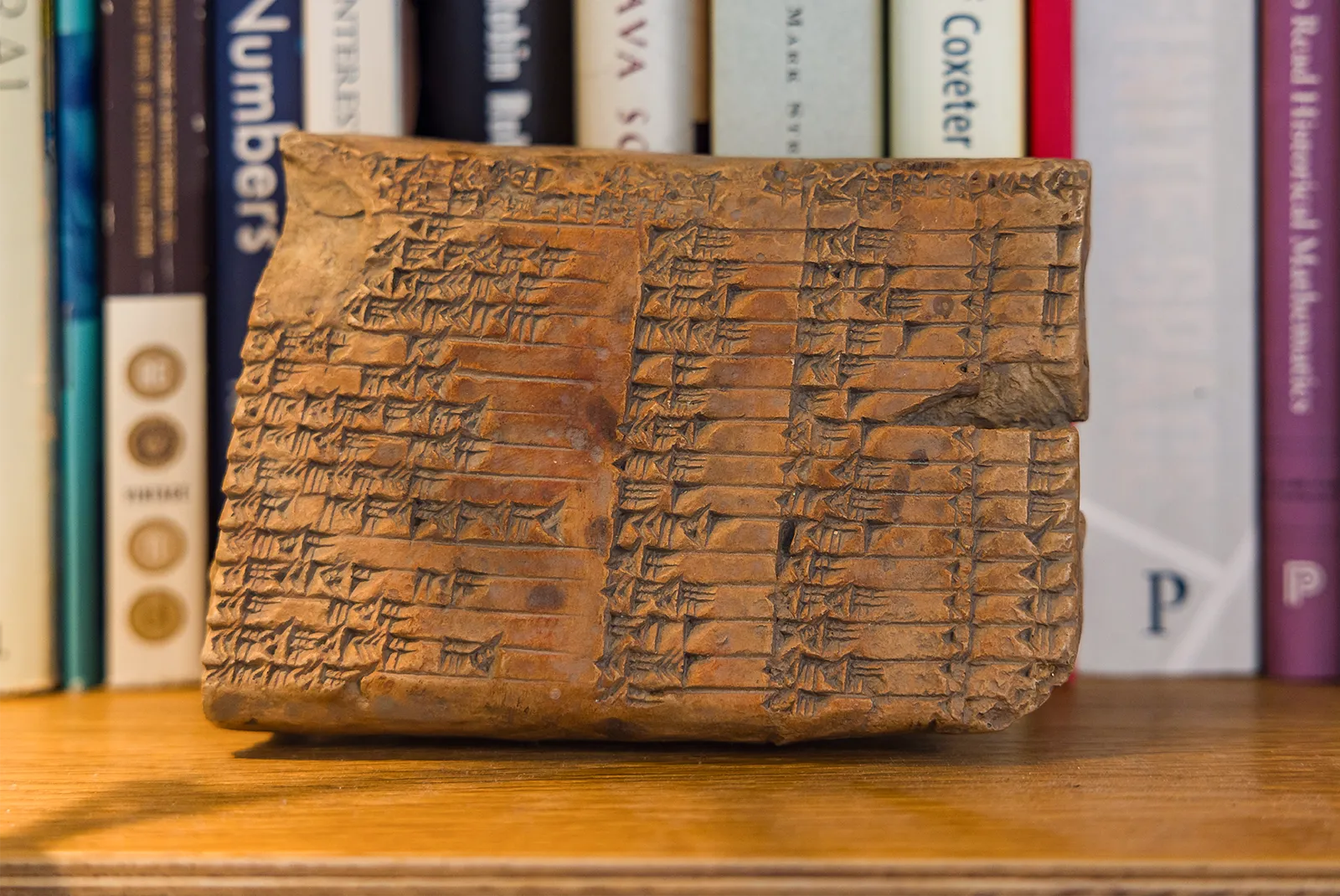
Hart is interested in the mathematical language found on this Babylonian cuneiform tablet, one of the earliest records of humans doing math.
Philipp Ammon for Quanta Magazine
How about math’s influence on literature?
A quite simple sequence, but it works very, very powerfully, is Eleanor Catton’s book The Luminaries, which came out in 2013. She used the sequence that goes 1,1/2, 1/4, 1/8, 1/16. Every chapter in that book is half the length of the one before. It creates this really fascinating effect, because the pace is picking up, and the characters’ choices are being more constrained. Everything hurtles toward its conclusion. By the end, the chapters are extremely short.
Another example of a slightly more complicated mathematical structure is what’s called orthogonal Latin squares. A Latin square is kind of like a sudoku grid. In this case, it’d be a 10-by-10 grid. Every number appears exactly once in each row and in each column. Orthogonal Latin squares are formed by overlaying two Latin squares so there is a pair of numbers in each space. The grid formed by the first number in each pair is a Latin square, and so is the grid formed by the second number in each pair. Furthermore, in the grid of pairs, no pair appears more than once.
These are very useful in all sorts of ways. You can make error-correcting codes out of them, which are useful for sending messages along kind of noisy channels. But one of the great things about these particular ones, size 10, is that one of the greatest mathematicians of all time, Leonhard Euler, thought they couldn’t exist. It was one of the very few times when he made a mistake; that’s why it was so exciting. A long time after he made this conjecture that these things couldn’t exist for particular sizes, it was refuted, and squares of this size were found in 1959. It was on the cover of Scientific American that year.
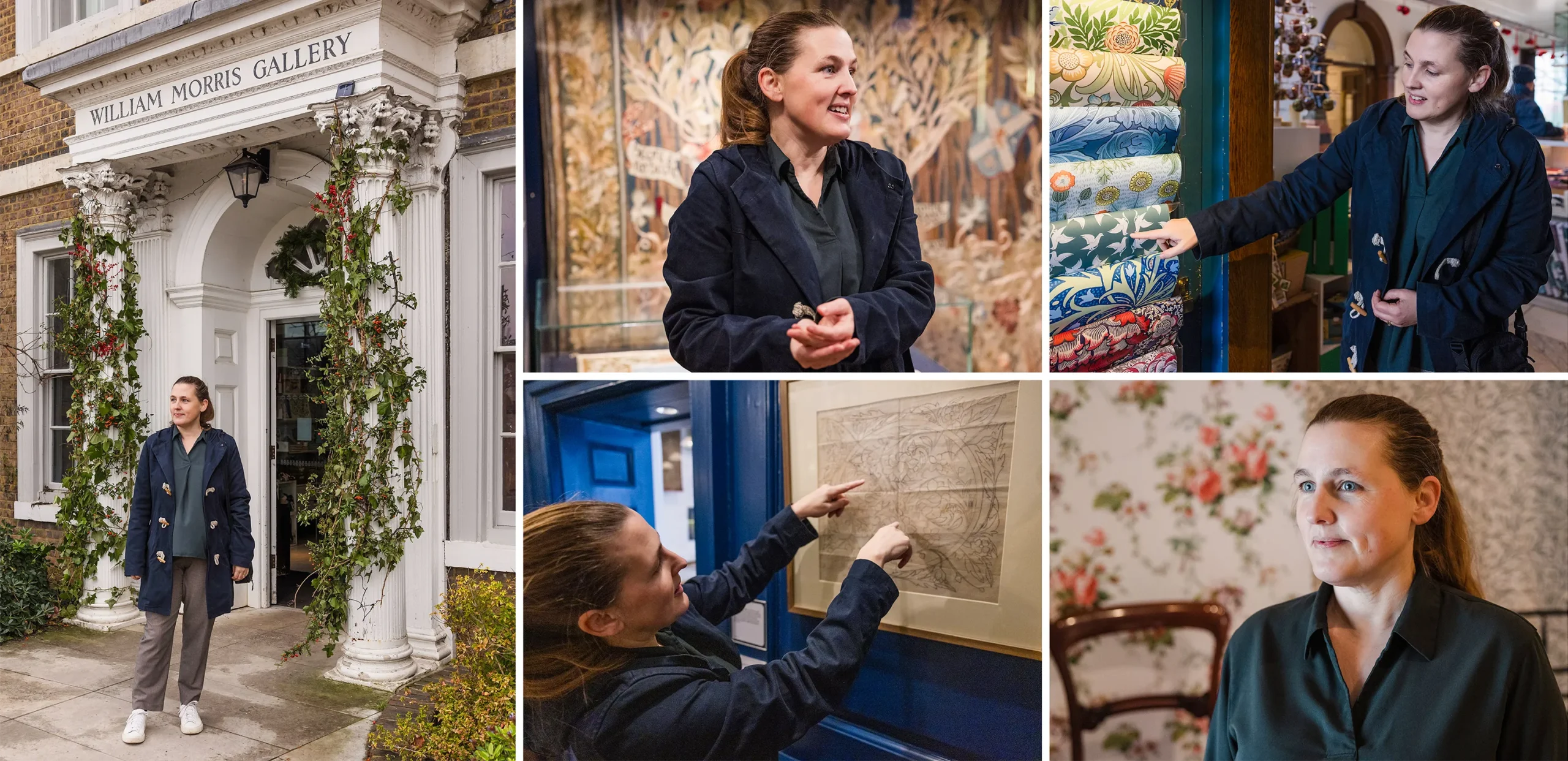
Hart has been making mathematical patterns since she was a young child.
Philipp Ammon for Quanta Magazine
Years after that, a French writer, Georges Perec, was looking for a structure to use for his book Life: A User’s Manual. He chose one of these orthogonal Latin squares. He set his book in a Paris apartment block, which had 100 rooms, a 10-by-10 square. Every chapter was in a different room, and every chapter had its unique flavor. He had lists of 10 things — various fabrics, colors, that kind of thing. Every chapter would use a unique combination. It’s a really fascinating way to structure the book.
You clearly value good writing. What do you think of the quality of writing in math research papers?
It’s very variable! I know we prize brevity, but I think sometimes that is taken too far. There are too many papers that don’t have any useful examples.
What we actually prize is an ingenious argument that, because it covers all the cases at once so cleverly, is also brief and elegant. That is not the same as squashing your long argument into a smaller space than it needs by covering the page with arcane sigils that you’ve created to make the notation briefer, but which not only the reader but probably you yourself will have to unpack laboriously again in order to make any sense of what’s going on.
We don’t give enough thought to helpful notation which reminds the reader what is meant. The right notation can absolutely transform a piece of mathematics, and can make space for generalizations as well. Think of the transition, historically, from writing an unknown, its square and its cube with three different letters, and how much more likely, and even possible, it is to start thinking about when you have started writing , and instead.

Hart works from her home office, which sits in her back garden.
Philipp Ammon for Quanta Magazine
Do you see evolution in the links between math and art?
There are new things all the time. Fractals were everywhere in the 1990s. On every student dorm room wall, there was a picture of the Mandelbrot set or something like this. Everyone was like, “Oh, this is exciting, fractals.” You get, for example, musicians, composers, who are using fractal sequences in their compositions.
When I was about 16, there were these new things called graphics calculators. Very exciting. And a friend of my mother’s gave me this program that could draw a Mandelbrot set on one of these little graphics calculators. It had about, I don’t know, 200 pixels. You program this thing in, and then I had to leave it for 12 hours. It would plot these 200 points at the end of it. So even mere schoolchildren could engage with this in the late ’80s and early ’90s, and produce these pictures for themselves.
Even when you were in school, you were already very interested in hardcore math, it sounds like.
I think I’ve been interested since before I even knew that meant I was mathematical. Like, I just always was making patterns from when I was a tiny, weeny child.
When I was quite little, my favorite toy was some very simple wooden painted tiles. They came in all different colors. I would make them into patterns, and then I’d look at it proudly for a day or so, and then I’d make another one.
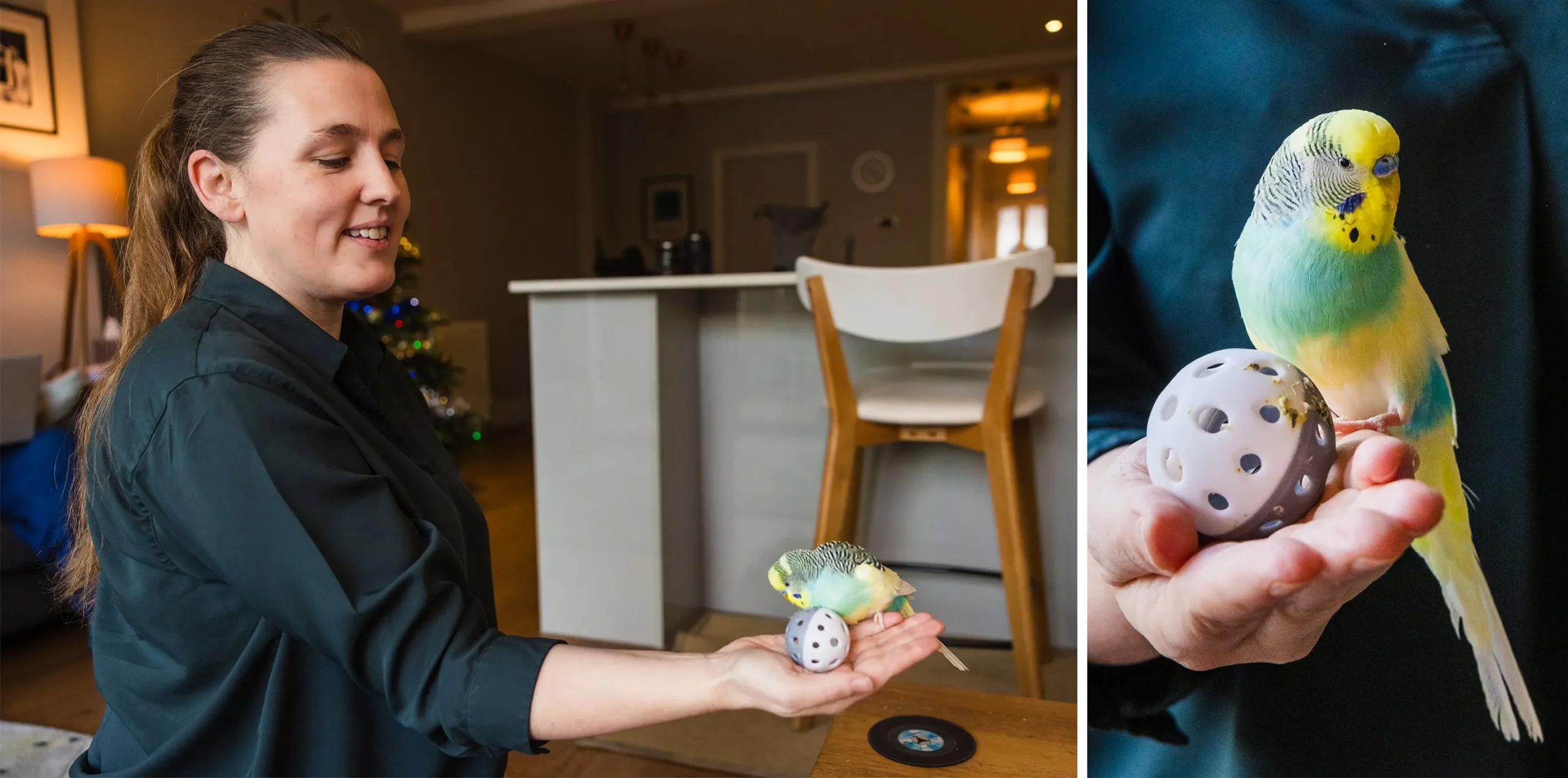
Hart with her bird, Coco, at her home in northeast London.
Philipp Ammon for Quanta Magazine
When I got a bit older, I would play with numbers and look at patterns. Mum would be the one I would go to and say, “I’m bored.” And then she’d say, “Well, can you work out what the pattern is of the number of points you need to make a triangle?” or whatever it was. She’d have me rediscover the triangular numbers or something, and I’d be very excited.
My poor mother, the number of amazing inventions that I would go to my mother with. “I’ve developed a whole new way of doing something!” And she’d say, “OK, that’s very nice. But, you know, Descartes thought of that centuries ago.” And then off I’d go; I’d come up with another amazing idea a few days later. “That’s lovely, dear. But the ancient Greeks had that one.”
Do you recall any particularly satisfying moments from your math research career?
The moments when you finally understand what the pattern is that you are seeing is always satisfying, as well as when you work out how to complete a proof you’ve been wrestling with. My strongest memories of those feelings of delight, probably because they were the first times I’d felt them, are from the start of my research career. But it’s still a lovely feeling to get that “aha,” when you finally understand what’s going on.
Very early on I was trying to prove something about infinite Coxeter groups. I’d resolved some of the cases, and in looking at the rest I came up with a technique that would work if a specific criterion was satisfied. You can write these relationships in a graph, so I started putting together a collection of the graphs for which my technique could be applied. This was over Christmas one year.

“Doing mathematics feels like discovery,” Hart said. “If we were inventing the mathematics, it surely wouldn’t be so hard to prove things! Sometimes we desperately want something to be true, and it isn’t.”
Philipp Ammon for Quanta Magazine
After a while, my set of pictures started to look like a particular set of graphs that were listed in a book about Coxeter groups that was in my office, and I began to hope that it was this exact set of graphs. If it was, then that would fill in the hole in my proof, and my theorem would be finished. But I couldn’t check for sure until I got back into the university after Christmas — this was before you could just Google everything. I think the anticipation of having to wait to confirm my hunch made it even better when I got to the book and compared my handwritten set of diagrams with the ones in the book, and they were indeed a match.
What do you think about the question of whether math is created or discovered? Almost nobody would argue that any of the novelists you write about in your book “discovered” their novels. Is this a fundamental difference between math and literature or not?
It probably is, though there are still some resonances.
Doing mathematics feels like discovery. If we were inventing the mathematics, it surely wouldn’t be so hard to prove things! Sometimes we desperately want something to be true, and it isn’t. We can’t avoid the consequences of logic, I suppose.
It all feels like discovery when you are doing it. Some choices mirror what we experience in the real world, like the axioms of geometry we work with, which are chosen because that seems to be roughly what reality is like — though even there, there’s no such thing as a “point” or a “line” (because we can’t draw something that takes up no space, and a line in geometry has no breadth and extends infinitely far).
To some extent, there are parallels to this continuum in literature. Once you define the rules of a sonnet, you will be hard-pressed to write one whose first line ends with “orange” or “chimney.”
But I can’t resist sharing something J.R.R. Tolkien said about writing The Hobbit: “It all began when I was reading exam papers to earn a bit of extra money. … Well, one day I came to a blank page in an exam book and I scribbled on it. ‘In a hole in the ground there lived a hobbit.’ I knew no more about the creatures than that, and it was years before his story grew. I don’t know where the word came from.”
Hobbits — did he create them or discover them?
